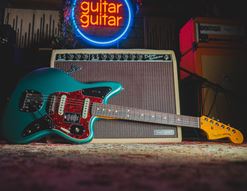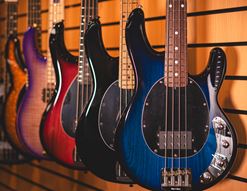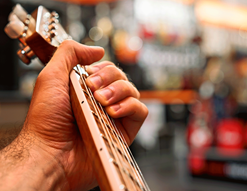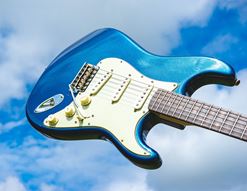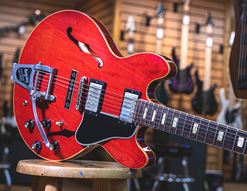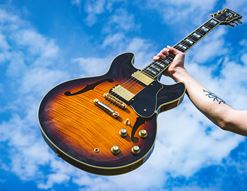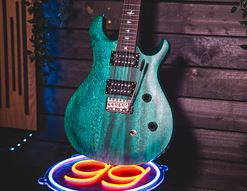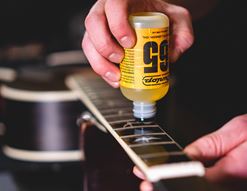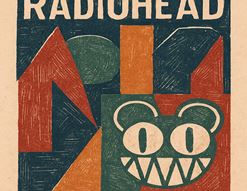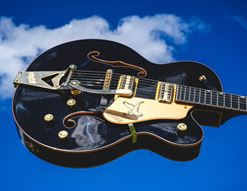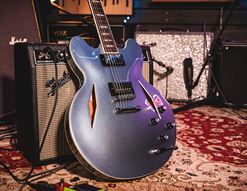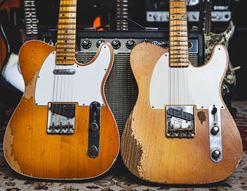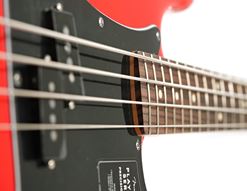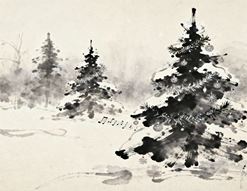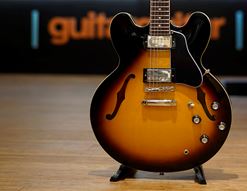Multiscale? Extended range? Fanned frets? How can a guitar even have more than one scale length?
If these questions have been plaguing your dreams, then thank your lucky stars, because I’m going to explain it all right here for you.
Multiscale guitars are part of a new(ish) revolution in the design and building of guitars. There is a whole new approach to guitar out there - playing and building - and instead of looking to the mid-century past, it’s all about the cutting edge; the here-and-now. It’s a revolution led by the need for progress, the desire for greater functionality and the advancement of technology. It’s a cutting edge area of the guitar world, and it has been driven as much by modern music as it has by anything design-related.
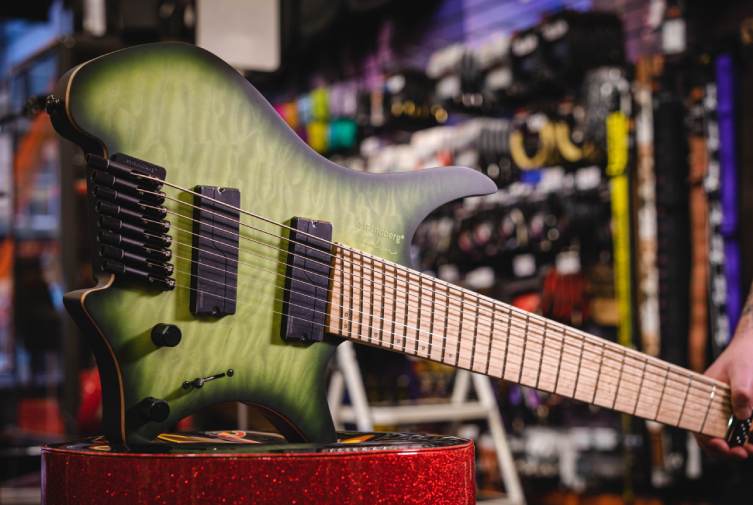
I’ll explain this all with context and examples, plus I’ll mention about the music that is incorporating (and driving) this new type of guitar.
What is a Multiscale Guitar?
Let me address the big question first. Just what is a multiscale guitar? It’s all about scale length. Scale length is a measurement of the actual playable area of a guitar string. Between the nut and the bridge is typically where we play of notes, so a measurement of this area will determine the scale length (factoid: the distance from the nut to the 12th fret should be the same as the distance from the 12th fret to the bridge: fret 12 should be the exact midpoint of a scale length).

So, on a typical guitar, the scale length will usually be 24.75” (Gibsons, Epiphones etc) or 25.5” (Fender, most other things). Some brands differ (PRS do 25” mostly) and acoustic guitars have their own rules, but 24.75” and 25.5” are mainly what you’re dealing with.
The point is, the scale length remains the same for every string: the lowest, thickest string has a scale length of 25.5”, and so does the lightest one. This means that tension differs and that overall intonation (how relatively ‘in tune’ you are across the fingerboard) is a compromise.
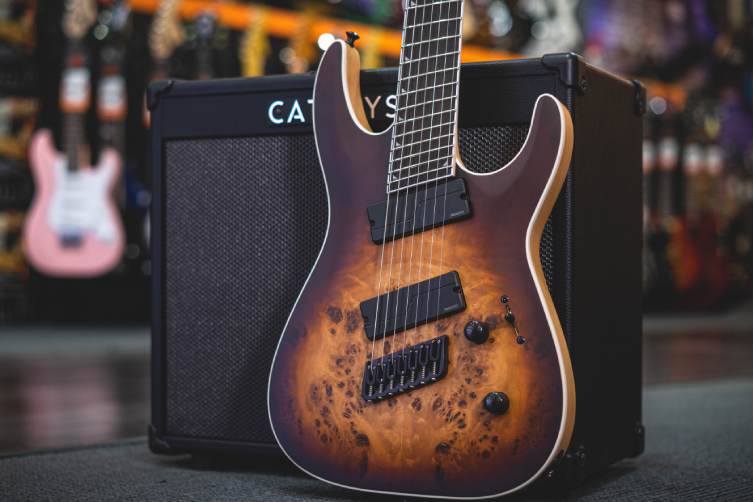
With a multiscale guitar, there are two separate scale lengths: one measured on the lowest string (normally the bigger/longer measurement) and the other at the lightest string. We’re talking less than two inches of difference normally, but it all adds up!
A multiscale guitar allows slightly less tension on the higher strings and slightly more on the low ones. This is to make the playing experience more ‘fair’, if you will: low, detuned riffs mean that the low strings are slacked, and the lack of tension can make them sound out of tune. A longer scale length sorts this issue without also making a problem for the lighter strings. They have a shorter scale length so that normal guitar techniques such as string bending are easy to achieve.
The idea is that you don’t really notice this when you play, you just get better intonation with more ‘in tune’ notes.
So how is this multiscale thing achieved?
What are Fanned Frets?

Check out the frets on this Strandberg 8 string. It’s a multiscale guitar (26.5” - 28”) and you’ll see the fretwork is not straight but instead slanted out in a fanned formation. This is what fanned frets look like, and that is how a guitar is able to have a multiscale (or two scale lengths on the same instrument). The frets fan outwards to create a longer scale length for those lower strings, and the angles that they sit at mean that the other strings operate in between those two scale lengths.
It works extremely well in practice! This is because our hands are never really in line with a guitar’s frets when we play, anyway: they sit at something of an angle. Fanned frets actually lean towards our hands’ natural playing positions, making multiscale guitars actually more comfortable to play than standard guitars.
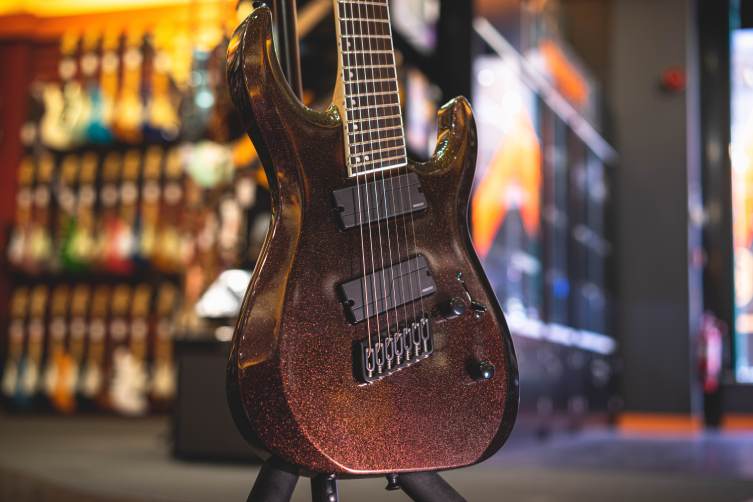
It doesn’t even take any getting used to, to be honest. It looks unusual, but just get going and you find that there are no extra difficulties involved in playing on a multiscale guitar.
Fanned frets have actually been around on guitars for a while. As far as I can tell, Ralph Novak, who made Novax guitars, was doing it in 1988, but his creations were niche, and so it has taken until relatively recently for it to become more of a mainstream proposition.
Intonation
The main benefit of a multiscale guitar is in the area of intonation. Playing in tune is something that, weirdly, we hardly ever properly experience on a guitar. We allow small discrepancies in tuning to exist because it’s the best compromise that can be had, but you do sometimes find that you need to tweak the tuning of a string or two when recording (where it’s noticed most), say, a solo part that sits on the upper frets. The tuning is fine down by the nut, but the second octave is a little ‘off’ - even when you’ve adjusted the bridge saddles for intonation.
Multiscales and fanned frets can really help with this, because each string is enjoying its own optimum length and can therefore sound and intone better.
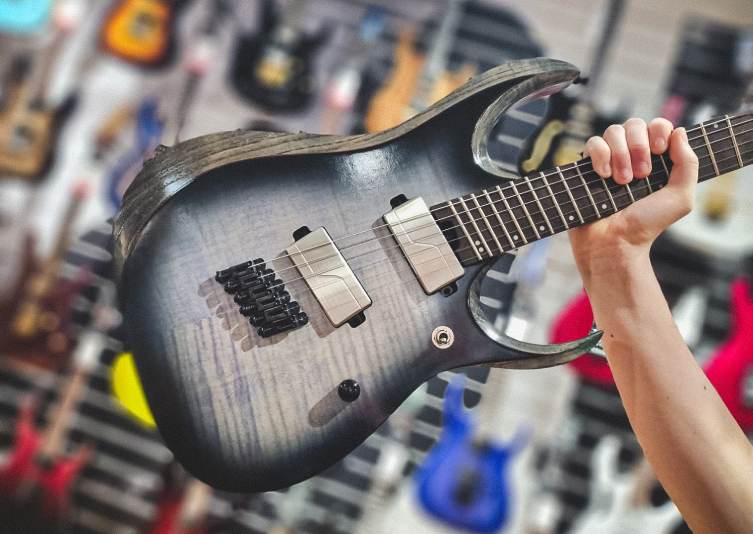
Slanted Pickups and Hardware
You’ll notice that pretty much all multiscale guitars have their pickups and bridge sitting at an angle, echoing the fretwork. It’s distinctive looking and cool, but does also serve a practical purpose.
As well as having the neck pickup physically align with the edge of the slanted multiscale fingerboard, the pickups sit in a way that allows the lower strings to be picked up slightly closer to the bridge, and the higher strings a little closer to the neck. Sonically, this helps ‘sharpen’ the low notes with more treble output, and it warms up the lighter strings as there is slightly less treble there. Strings are not equal in size or pitch, so why shouldn’t there be concessions made for their individual tones too?

As for the bridge, well, it makes sense to help the multiscale by angling the saddles, but look at most multiscale guitars and you’ll see the bridges are often (not always!) built with completely separate parts for each string. This allows height and intonation to be set more specifically, with no compromises for the other strings. When you’re tuning down to notes like a low F# or even below, you need to be able to control how tight that string feels on your guitar. This sort of bridge facilitates that.
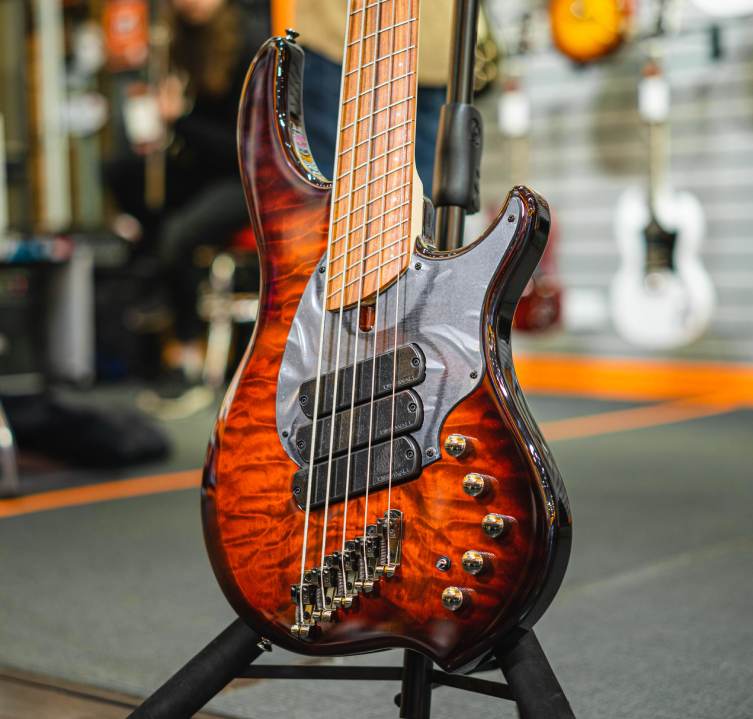
Who Makes Multiscale Guitars?
Multiscale guitars are more popular than ever, and whilst lots of manufacturers make them, there are plenty who still don’t. It’s a modern innovation, so heritage electric brands like Fender, Gibson, Rickenbacker and Gretsch don’t currently offer multiscale instruments.
The place to look is in the rock, prog and djent areas, where players use guitars like Schecter, Jackson, Ibanez and other future-facing brands. Surprisingly, PRS have yet to dip their toe into this market (they have a reputation for innovation), but new breed guitar makers like Ormsby and Strandberg (Dingwall basses too) are offering lots of multiscale goodness.
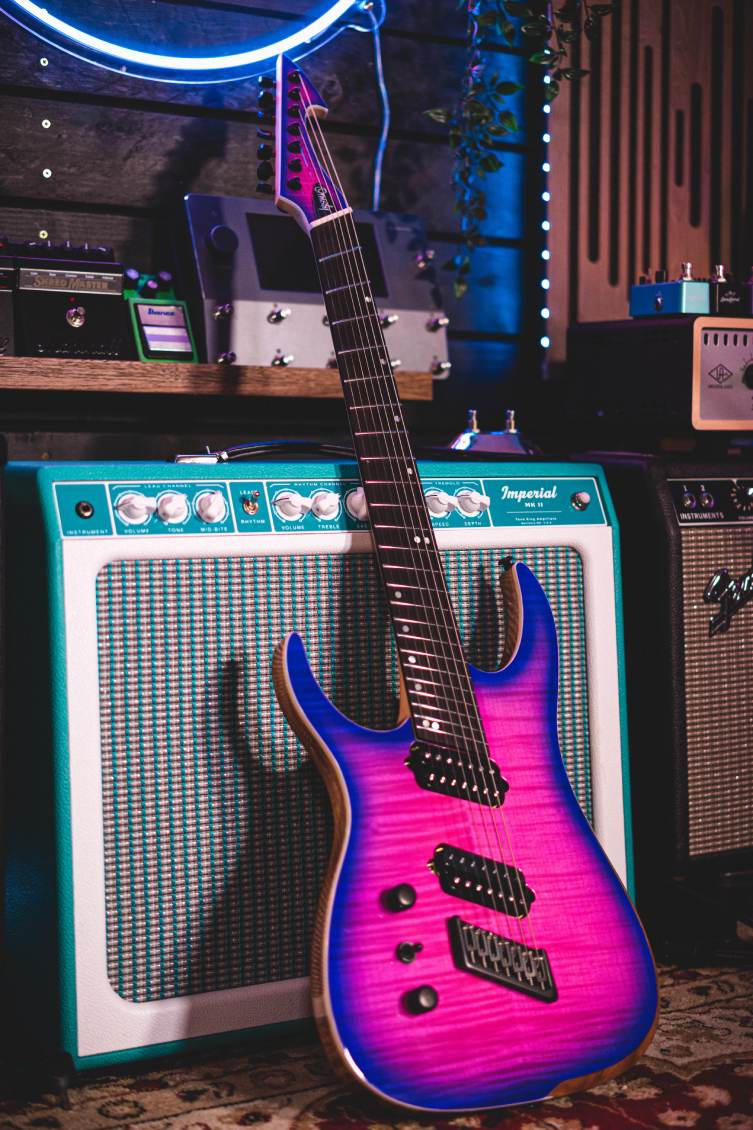
Who Plays a Multiscale Guitar?
Right now, most guitarists taking advantage of multiscale guitars are working in contemporary genres, and often with lots of technique required in their music. It just suits those types of music,where speed, dexterity and accuracy are more important. Now, that’s just a snapshot, and there are always other types of musician who want this level of accuracy: jazz guitarists, for one thing!
The people who aren’t using multiscale guitars are those who prefer a more time-honoured, classic type of electric guitar. This is why we don’t see the likes of Fender Telecasters or Gibson ES335’s with fanned frets (although I think both of those would be great!), because the perception of the market is that it’s too niche for such mainstream guitars.
In terms of notable players who choose multiscale guitars, the list is currently a short but potent one:
- Plini
- Tosin Abasi
- Ichika Nito
- John Petrucci (certain MM Majesty guitars are multiscale)
- Sarah Longfield
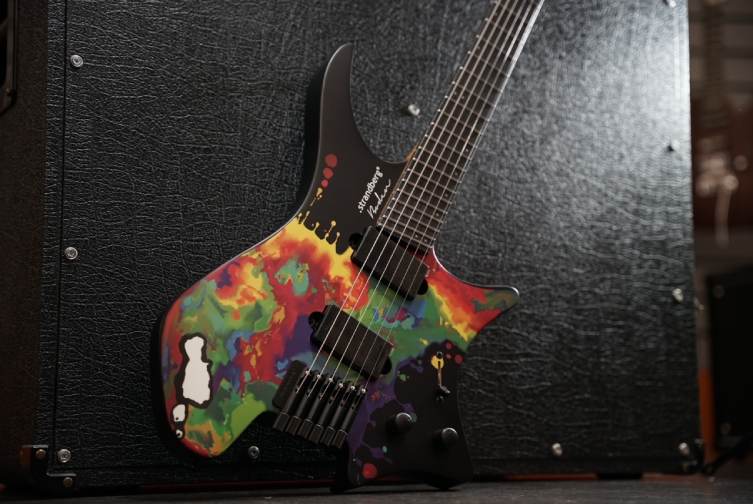
Should I Buy a Multiscale Guitar?
If you’re intrigued by the idea of multiscale guitars, I definitely recommend you try one or two out next time you’re in a guitarguitar store. Keep an ear out for the intonation, and notice how much your hand acclimates to the fanned frets.
Should you buy one? Well, if you record guitar music and want your parts to be very ‘in tune’ sounding, then a multiscale guitar is going to be very useful!

If you play downtuned heavy riffs, then you’ll know yourself how much that low string bounces around and goes sharp, right? A multiscale guitar (with the appropriate number of strings on it) will remedy that and have your heaviness actually sounding heavy rather than flabby.
If you want something that’s nothing like a Gretsch/Les Paul/Strat/Tele etc but requires absolutely no adjustment of your existing skills, I’d say try one out! Check out our multiscale offerings by clicking the link below, and search for what your heart desires!
Click to View our Selection of Multiscale Guitars

